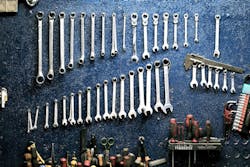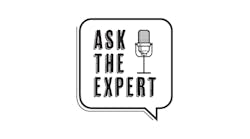Coast to coast, shop owners face the same urgent dilemma regardless of scope, size or scale: a rapidly changing industry, lack of trust with customers, and an ongoing technician shortage that forces shops to overcompensate and hurt their efficiency and productivity.
BOLT ON TECHNOLOGY can help solve these problems. For over 10 years, BOLT ON TECHNOLOGY has equipped the automotive repair and maintenance aftermarket with award-winning technology and tools to improve customer communication.
The company’s technology instantly transmits photos, videos and text messages to communicate automotive repair details, thereby increasing customer trust, boosting sales and empowering shops to build long-term customer relationships. Along with ongoing training and support, BOLT ON’s mobile and digital tools also reduce problems inherent in the service process, while increasing shop productivity, revenue, and customer satisfaction.
Below, several shop owners share their insights about how BOLT ON has helped them succeed where others have failed. For many, it starts with the right tools, but that’s only the tip of the iceberg.
No. 1: Achieve Optimal Effective Labor Rate
At the 2019 Automotive Training Institute (ATI) conference in Baltimore, Pat Connell is considered a Mastermind.
Well, he and 19 other industry luminaries. Connell is part of a top-tier 20 Group championed by ATI, and after a day of brainbusting and problem solving, he had this to share:
“Did you know dogs don’t tire from physical activity? They’ll zonk out from mental activity, though, after creating new habits and problem solving.”
Thinking about why you do what you do can be exhausting, but it fuels owners such as Connell. Connell is the president and CEO of ARS Fleet Service (New Castle, Delaware). ARS has both a collision repair center and a mechanical shop and understanding why it works the way it does has been key to its (and Connell’s) success. Connell bought ARS in 2006 and within a decade had accelerated its annual revenue from around $800,000 to almost $10 million.
He cites one shop factor as the primary cog in his wheelhouse: effective labor rate (ELR), or the amount of total labor sales ($) divided by total labor hours billed.
“We focus on it every day—it’s the only rate that really matters,” he says.
Connell understands that if you know what your efficiency is and how you perform in the market, you can really get creative with your hourly rates to produce the best opportunity for profitability as well as the best client experience.
Connell cites two factors to understand when committing to ELR. First, it affects the profitability much more than you think, and second, ELR is a function of the counter, not the technicians.
“Most of the time the situation is ‘we need to work harder or longer and get more cars,’ and that scenario erodes ELR even more. Now you’re in overtime and you’re creating inefficiencies. Focusing on the counter and monitoring techs’ production and behavior with discounts and services drives ELR.”
To help increase efficiencies, Connell and ARS look to BOLT ON TECHNOLOGY for convenient (and cutting-edge) shop tools and services.
“Our team embraced it immediately,” he says.
“We’re a solution-oriented company and desire new and better strategies to get organized. Vision is huge for us, and [Mike Risich] and the BOLT ON staff are visionaries.”
Connell doesn’t focus on just one service from BOLT ON TECHNOLOGY—he uses them all. He uses digital recommendations, text to pay and more. PRO Pack software specifically eases communication between the counter and the bay, improving efficiency and empowering owners to better manage ELR.
“They know the business, and BOLT ON designs products that really assist the shop owner to create the best shop possible. They listen to shop owners and create solutions. Companies like BOLT ON are advancing us quicker than we ever have before.”
Like the lessons learned at ATI, Connell knows that implementing change can sometimes be an arduous process within the shop, but the results will show, especially when it comes to ELR. Don’t check last month’s numbers and account for it next week; check Monday’s numbers on Tuesday to improve on Wednesday, he says.
“When do they say to train your dog? Immediately. It’s the same thing in business; duplicate that training. Train today for what happened yesterday and see what happens.
“I guarantee it will be good.”
To learn more about the tools to boost ELR,
visit BOLTONTECHNOLOGY.COM/PRO-PACK.
No. 2: Hire, Train & Retain Talented Technicians.
One of the most troublesome aspects of modern car repair is the dearth of talented technicians. Vocational school enrollment has been in decline for years and some industry outlooks report that by 2026 the repair industry will be almost 50,000 technicians short.
Frank Leutz, owner of Desert Car Care (Phoenix), knows the struggle. He wants his technicians to know that they’re valued, that he wants to see them grow, and that he’ll do everything he can to help them achieve their goals. He feels technology and modern shop equipment is a clear signal to his staff that he has their long-term interests at heart.
“Creating self-awareness is key and critical; we already have a shortage of technicians and we’ll just push them away if we don’t address their needs,” he says.
Hiring, training and retaining skilled technicians isn’t just a private incentive for a more lucrative shop—it’s a public good in service to the community.
Here are some strategies to find (and keep) the best techs around:
1. Offer competitive compensation. According to the U.S. Bureau of Labor Statistics, the annual average wage for automotive technicians is $36,950. While many technicians achieve twice or even triple that, the numbers don’t lie—the average opportunity lies, well, elsewhere.
“My lead techs make $100,000 per year,” Leutz says. “We pay well and I don’t have turnover. New hires everywhere can leave for a different industry section and make more money right now. Gone are the days when you start someone at minimum wage, hand them a broom, and say, ‘Hang out with this for two years and we’ll see what happens.’”
Out with the brooms; in with the tablets. Leutz gets his team on board with digital tools as soon as possible to help position his shop as modern, cutting-edge and a desirable place to work. Coupled with the training BOLT ON shops receive to maximize customer relationships through transparent and easy-to-understand data, Leutz has dynamically differentiated himself from other shops in the minds of his technicians and customers.
2. Learn what motivates your team. Understanding what motivates your technicians—money, benefits, time off, flexible working hours, or some combination of them all—will work wonders for deciphering individual pay plans, incentive programs and work schedules. Everyone has different priorities, goals and dreams—enable your techs to achieve them, and they’ll reward you with hard work and long-term employment.
“Learn from the people in your organization,” Leutz says. “Most problems that will tilt your ship are three feet in front of you, and that’s your people. As operators, you’re constantly looking for ways outside the box to do better, but it’s what’s in the box—your shop—that matters.”
3. Provide an employment roadmap. No technician works in a vacuum, but for decades it often felt that way. What is the way forward? Can a young technician become a shop manager in 10, 15, 20 years? In other words, give your staff an answer to this question: Why should I stay here?
“The key factor is identifying who the person is outside the resume,” Leutz says. “Once we create that mindset, KPIs and other shop indicators will be secondary, and the money will come. And your team will be happier than they’ve ever been before.”
“Each business needs to identify what it wants, what it can do, and how to change accordingly,” Leutz says. “That usually means tools, technology and best practices, and the value to your customers will be evident.”
To learn how to equip your staff with the right tools and empower them with the right training,
check out blog.BOLTONTECHNOLOGY.com/topic/training-and-advice.
No. 3: Increase the Value of your Business
When Ratchet+Wrench spoke with Kent Smith, president of the International Midas Dealers Association, he was en route to the Mediterranean. He’s taking his family as well as a cadre of trusted employees. After over 40 years in the business working his way up from a 17-year old Midas employee to assistant manager, manager, and, finally, MSO owner and president of IMDA (1,100-plus shops), he knows a thing or two about fostering relationships that lead from the shop floor to unexpected places (such as Europe).
As a self-described entrepreneur, Smith learned the business from the ground up, learning from mentors and seizing opportunities until he found himself mentoring others. Smith believes in people—surround yourself with the right people, and the results and revenue will come. He knows BOLT ON TECHNOLOGY believes it, too, enabling Smith’s shops to thrive in a crowded marketplace.
“The key with BOLT ON is the right people,” he says.
“I have six of 18 shops with BOLT ON TECHNOLOGY, and I’d like more. BOLT ON is a benefit to the customer.”
He describes digital inspection forms as a game changer for shops. For years, Smith has been known as “the turnaround guy,” tweaking a shop’s process to turn ledger rust into ledger revenue.
“It’s about transparency and trust—transparency of the process, and trust with the customers,” he says.
“Digital inspections—and the data, ease and recordkeeping they provide—bridges the gap from the repair order to the repair itself, educating customers about how and why their vehicle broke and needs fixing.”
It’s now easier than ever to build trust by sharing photos and notes with the customer via mobile shop tools, transforming the customer/technician relationship into consultative instead of transactional. Many customers are also more apt to respond to a text immediately instead of a voicemail, so the shop can more accurately plan for authorized work instead of waiting for tomorrow’s voicemails. Tools such as Mobile Manager Pro are made to do this.
Smith’s father used to tell him, “Common sense is uncommon.” For Smith and the shops, owners and technicians under his wing, common sense rules the day, and the common-sense approach to data and transparency has led to success.
“Once you have a good process, you can expect results. That’s why I like BOLT ON—it’s part of a process and system that is the recipe for a successful repair shop,” he says.
Smith looks forward to a time when anything but digital inspections will be considered archaic. Remember when you had to hit the number “6” on your mobile phone three times to get the letter “O”?
“I can’t imagine anyone looking at this technology from a practical standpoint and saying, ‘why wouldn’t this be the future, and good for the customer?’” he says. “These tools enhance the customer experience.”
Smith isn’t just waiting for the future to roll around to Midas and the stores under his purview—he’s actively embracing it, welcoming change and implementing processes today to protect his customers tomorrow.
For an uncommon experience, consider what digital inspections can do for you.
Check out BOLTONTECHNOLOGY.COM/mobile-manager-pro for more information.
Evolving Shops Through Technology
Mike Risich is founder and CEO of BOLT ON TECHNOLOGY. In a brief discussion he shared his inspiration and vision for the auto repair industry.
How did you get started in the industry?
This version of BOLT ON TECHNOLOGY was founded in September 2009. I’m a software engineer by trade, and I started helping repair shops in the mid to late ’90s and now find myself serving over 5,000 shop owners.
Out of all the places I could have gone as a software engineer during the web boom around the millennium, I chose auto repair because I fell in love with the people. I worked for a boutique consulting firm in Philadelphia, and it didn’t have the same reward—there was more impact for me personally helping the automotive market solve its challenges and embrace opportunities.
What appeals to you about helping shop owners?
Many times, the guy who hung the shop shingle is also the guy who works under the hood. Having his own place may be better than working for someone else, but there’s not enough hours in the day to do all the jobs and wear all the hats that you need to wear as a small business owner. That’s where our strengths come from—we leverage technology to help with all the micro competencies.
The evolution from tech to service advisor to manager to owner is a common path in our industry, and we provide solutions that help all areas of those job descriptions. Technology empowers you to get more done in the same time period. By embracing it in ways where you can implement systems and best-practice procedures, you can eliminate many hoops you had to jump through. That’s been a focus of ours for 20 years—we believe that the greatest tool shops have is the one with a screen in front of them. Automate routine tasks so you can focus on the repair work.
So, BOLT ON provides tools, tech and resources to more fully track what’s going on in the shop?
Absolutely correct. Some owners work in their business, not on their business. They “own a job,” you might say, instead of a shop. There are points in a career where that’s exciting and attractive, but it gets old very soon. I’ve been there! You need to evolve and build a team that supports the mission you’re trying to achieve. You must talk about those points and execute them as well. That’s what BOLT ON is all about.
What’s next for BOLT ON TECHNOLOGY?
The path we’re going down is to simply help eliminate the challenges that face shops today. Our customers trust us—they trust us so much they tell us exactly what to work on. Let’s create solutions that fit our customers with an eye toward the best practices of industrial juggernauts such as Amazon and Apple. Text to pay, for example, is frictionless—nobody really enjoys paying for their automobile to be serviced, but they do enjoy that it’s painless.
The biggest challenge in the entire industry is the perception that the vehicle owner is being taken for a ride, and that the repair work being performed is unnecessary or falsified. If we can continue to innovate and bring solutions to market that lower the anxiety during that transaction, create transparencies and build trust between the owner and the shop, everyone wins (the customer most of all).
We don’t just sell software—we help shop owners improve their lives. We have invested tons of time and resources into training and mentoring shops to break down that monoculture. Software has the ability to transform the business, but only if used properly. BOLT ON UNIVERSITY is a huge resource for owners savvy enough to take advantage of it; it’s all well and good to have the best hammer on the market, but you need to know which end strikes the nail. That’s what BOLT ON UNIVERSITY provides.
Soon, you’re going to need a software engineer in the bay. We need to help this industry convey the message that a fair exchange of dollars for service is achievable. And if we can do that, we’ll have accomplished something monumental.



